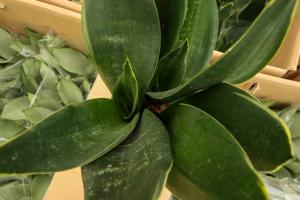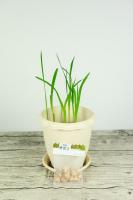Can You Save Frozen Tomato Plants?
Tomatoes are one of the most popular vegetables to grow in gardens. However, if you live in an area with cold winters, you may find yourself in a situation where your tomato plants are exposed to frost and freeze. This can occur even if you've taken precautions to protect them. So, can you save frozen tomato plants?
Assessing the Damage
When you have frozen tomato plants, the first thing you should do is assess the extent of the damage. Look at the leaves and stems of the plant. If they are black and mushy or brittle, the plant has been damaged by the freeze. However, if the stems and leaves are still green, there may be a chance to revive them.
Reviving Frozen Tomato Plants
If only a few leaves or stems are affected, you can prune them back to healthy tissue. This will encourage the tomato plant to focus its resources on growing new leaves and stems. You may also want to consider covering the tomato plant with a protective sheet or burlap sack to prevent further damage from future frosts or freezes.
If the entire plant has been affected, you may have to wait until the weather warms up and start a new one. However, before you remove the plant, try these steps to revive it:
Cut back the stems to about 6 inches above the soil line.
Water the plant well, making sure the soil is moist but not waterlogged.
Add a layer of organic mulch around the base of the plant to help retain moisture and prevent weed growth.
Cover the plant with a plastic sheet or burlap sack to trap in heat and humidity.
Remove the cover during the day to allow for air circulation and check the moisture level of the soil regularly.
With luck, your tomato plant will begin to show signs of life within a few weeks. However, if it doesn't, you may have to start from scratch.
Preventing Frost and Freeze Damage
The best way to save your tomato plants from frost and freeze damage is to prevent it from happening in the first place. Here are some tips to help protect your plants:
Choose varieties that are more resistant to cold weather, such as cherry tomatoes or early varieties.
Plant tomatoes in raised beds, which will drain better and warm up more quickly in the spring.
Cover your plants with a protective sheet or burlap sack on cold nights.
Water your plants during the day to keep the soil moist, which will help to retain heat at night.
Add a layer of organic mulch around the base of the plant to help retain heat and prevent weed growth.
Consider using a portable space heater or heat lamp to keep the plants warm on extremely cold nights.
By taking these steps, you can reduce the chances of your tomato plants being damaged by frost and freeze, and hopefully avoid having to revive them in the first place.
Conclusion
Frozen tomato plants are certainly a major setback for gardeners, but all hope is not lost. With careful assessment and a few simple steps, you can help to revive your plants and bring them back to life. Additionally, prevention is always better than cure, so take steps to protect your plants from frost and freeze in the first place. By doing so, you can enjoy a bountiful tomato harvest year after year, even in colder climates.

 how many times do yo...
how many times do yo... how many planted tre...
how many planted tre... how many pine trees ...
how many pine trees ... how many pecan trees...
how many pecan trees... how many plants comp...
how many plants comp... how many plants can ...
how many plants can ... how many plants and ...
how many plants and ... how many pepper plan...
how many pepper plan...
































